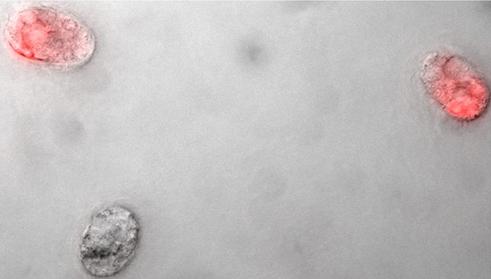Given its genetic tractability, ease of culture, and susceptibility to a variety of bacterial and fungal pathogens, the nematode Caenorhabditis elegans has been an attractive model organism for exploring microbe-host interactions. However, due to a lack of convenient experimental systems, relatively few studies have explored virus-C. elegans interactions.
Arbovirus infection of C. elegans embryos, indicated by red fluorescence.
 Survival of adult worms after arbovirus infection.
Survival of adult worms after arbovirus infection. Recently, we have developed methods for establishing infection of C. elegans with arboviruses encoding fluorescent reporter proteins. Using this in vivo model system, we have identified mutant nematode strains with enhanced susceptibility to arbovirus infection.
Our work has provided the first evidence for vertical pathogen transmission in C. elegans, opening up exciting possibilities for exploring eukaryotic host defense mechanisms that protect the germline (and offspring) from pathogen infection. We are using this new model system as a complement to our Lepidopteran and mammalian system studies to aid us in defining the antiviral mechanisms employed by eukaryotic hosts to restrict arbovirus replication.
 Arbovirus infection of C. elegans embryos, indicated by red fluorescence.
Arbovirus infection of C. elegans embryos, indicated by red fluorescence.